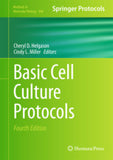Treated Wastewater in Agriculture: Use and impacts on the soil environments and crops By Guy Levy (Editor), P. Fine (Editor), A. Bar-Tal (Editor)
This product is currently sold out.
Treated Wastewater in Agriculture: Use and impacts on the soil environments and crops
- Use of Treated Wastewater (TWW) for irrigation is increasingly important as the world's population increases
- Chapters prepared by leading scientists in the field
- Comprehensive coverage of current knowledge and advances in the area of TWW
- Focus on possible environmental impacts (positive and negative)
Contributors list.
Part I GENERAL ASPECTS.
Chapter 1 Sources and composition of sewage effluent; treatment systems and methods (Renato Iannelli and David Giraldi).
1.1 Sources of usable wastewater.
1.2 Main characteristics of usable wastewater.
1.3 Wastewater treatments.
1.4 Framework for the selection of the optimal treatment train.
Chapter 2 Health considerations in the recycling of water and use of treated wastewater in agriculture and other non-potable purposes (Hillel Shuval).
2.1 Introduction.
2.2 Rationale: why should society allow, regulate, and thus encourage exposure of the population to known health risks?
2.3 Persistence of pathogenic microorganisms in water, soil, and on crops from wastewater-irrigation.
2.4 Disease transmission by wastewater-irrigation.
2.5 Control of crops and irrigation methods to reduce health risks.
2.6 Development of health standards and guidelines for wastewater use.
2.7 Conclusions.
Chapter 3 Irrigation with recycled water: guidelines and regulations (Nikolaos V. Paranychianakis, Miquel Salgot and Andreas N. Angelakis)
Terminology definitions.
3.1 Introduction.
3.2 Historical development of water recycling and reuse regulations.
3.3 Water recycling in agriculture: quality issues.
3.4 Treatment requirements and TWW quality monitoring.
3.5 Water reuse criteria: irrigation of agricultural crops and landscapes.
3.6 Conclusions.
Chapter 4 Economic aspects of irrigation with treated wastewater (Efrat Hadas and Yoav Kislev).
4.1 Introduction.
4.2 Wastewater in agriculture.
4.3 Wastewater and the regulation of its reuse.
4.4 Treatment.
4.5 Cost.
4.6 Replacement of fertilizers.
4.7 Cost allocation and prices.
4.8 Further considerations and alternatives.
4.9 Agreements.
4.10 The role of the government.
4.11 Concluding comments.
Part II IMPACTS ON THE SOIL ENVIRONMENT AND CROPS.
Chapter 5 Major minerals.
5.1 Nitrogen in treated wastewater-irrigation (Asher Bar-Tal).
5.2 Phosphorus (Bnayahu Bar-Yosef).
5.3 Calcium and carbonate (Gil Eshel and Michael J. Singer).
Chapter 6 Toxic elements.
6.1 Boron (Uri Yermiyahu, Alon Ben-Gal and Rami Keren).
6.2 Chlorides in treated wastewater and their effects on plants (Uzi Kafkafi).
Chapter 7 Heavy metals in soils irrigated with wastewater (Amir Hass, Uri Mingelgrin and Pinchas Fine).
List of acronyms.
7.1 Introduction.
7.2 Heavy metals in effluents.
7.3 Organic matter: composition in wastewater effluents and behavior in soil.
7.4 Attenuation of heavy metals in soils irrigated with effluents.
7.5 Loading limits of metals.
7.6 Metals: interaction with soil components.
7.7 Distribution of metals among the soil’s solid fractions.
7.8 The stability, pH and Eh of free oxides, and their effect on the geochemical distribution of metals.
7.9 Heavy metal solubility and speciation in the soil solution.
7.10 Mobility of heavy metals in the soil profile.
7.11 Availability to plants.
7.12 Summary and conclusions.
Chapter 8 Salinity (Nico E. Marcar, Tivi Theiveyanathan and Daryl P. Stevens).
8.1 The nature of salinity.
8.2 Measuring salinity.
8.3 Mechanism of soil salinisation.
8.4 Salinity in wastewater.
8.5 Effects of salinity on plant growth and water use.
8.6 Water use.
8.7 Managing root-zone salinity.
8.8 Summary and conclusions.
Chapter 9 Physical aspects (Guy J. Levy and Shmuel Assouline).
9.1 Introduction.
9.2 Soil structural stability.
9.3 Soil hydraulic properties.
9.4 Soil surface sealing, infiltration and runoff.
9.5 Soil erosion.
9.6 Water repellency.
9.7 Concluding comments.
Chapter 10 Fouling in microirrigation systems applying treated wastewater effluents (Carlos G. Dosoretz, Jorge Tarchitzky, Ilan Katz, Elisha Kenig and Yona Chen).
10.1 Introduction.
10.2 Quality of treated effluents as a source of irrigation water.
10.3 Emitter clogging in relation to irrigation water quality.
10.4 Management of emitter clogging.
10.5 Recovery of clogged emitters.
10.6 Concluding remarks and future prospects.
Chapter 11 Effects of treated municipal wastewater irrigation on soil microbiology (Dror Minz, Rachel Karyo and Zev Gerstl).
11.1 Introduction.
11.2 Soil microbial ecology and activities.
11.3 Human pathogens.
11.4 Summary and conclusions.
Chapter 12 Impact of irrigation with treated wastewater on pesticides and other organic microcontaminants in soils (Zev Gerstl and Ellen R. Graber).
12.1 Introduction.
12.2 The effect of DOM on the chemical behavior of organic xenobiotics.
12.3 Effluent-borne organic contaminants.
12.4 Summary and conclusions.
Chapter 13 Organic matter in wastewater and treated wastewaterirrigated soils: properties and effects (Yona Chen, Carlos G. Dosoretz, Ilan Katz, Elizabeth Jueschke, Bernd Marschner and Jorge Tarchitzky).
13.1 Introduction.
13.2 Organic matter in wastewater.
13.3 Soil organic matter (SOM).
13.4 The influence of treated-wastewater-borne organic matter on soil organic matter.
13.5 The influence of treated-wastewater-borne organic matter on soil properties.
13.6 Concluding remarks.
Chapter 14 Analysis of transport of mixed Na/Ca salts in a three-dimensional heterogeneous variably saturated soil (David Russo).
14.1 Introduction.
14.2 Modeling of transport of mixed Na/Ca salts in spatially heterogeneous, variably saturated soils.
14.3 Simulation of transport of mixed Na/Ca salts in spatially heterogeneous, variably saturated soils.
14.4 Summary and concluding remarks.
References.
Index.
*Chapters prepared by leading scientists in the field
*Comprehensive coverage of current knowledge and advances in the area of TWW
*Focus on possible environmental impacts (positive and negative)
"This book is a comprehensive examination of irrigation with TWW from both agricultural and environmental perspectives, looking at both the advantages and disadvantages of this technology . . . this book is an essential reference for anyone working in irrigation, crop production, and water management." (Booknews, 1 April 2011)
Related Products
-
A Textbook of Modern Toxicology,...
8,942.00
10,520.00 -
Advanced Distillation Technologi...
13,500.00
15,000.00 -
Analysis of Pesticides in Food a...
2,895.00
13,068.00 -
Analysis of Pesticides in Food a...
10,900.00
12,175.00 -
Basic Cell Culture Protocols 4th...
10,700.00
12,559.00
- Architecture & Construction Management Books
- Biochemistry, Bioengineering and Biotechnology Books
- Books on Analytical Techniques, GC MS, LC, TLC, HPLC, NMR Spectroscopy
- Books on Water and Wastewater Treatment, Analysis Water Treatment Plants
- Chemical Technology, Organic Chemistry, Chemical Synthesis and Chemical Analysis Books
- Cosmetics Science, Cosmetics Formulations, Manufacture and their Analysis Books
- Drugs and Pharma Science Books
- Essential Oils, their Analysis, Natural Products Extraction, Distillation , Isolates Related Books
- Flavor Science, Flavor Analysis, Flavor Creation, Food Flavors Books
- Food Science and Technology, Baking , Food Ingredients , Food Quality , Food Regulations
- Formulations of Perfumes for Agarbatti, Air Freshners, Soaps & Detergents, Fabric Softeners , French style Perfumes, Attars , OUD, Fine Fragrances
- Fragrances, Scents, Attars , Perfumery and Aroma Chemicals Books
- Herbal, Ayurvedic, Medicinal Plants and Aromatic Plants Books
- Law Books
- Major Reference Works (MRWS) Sets - MultiVolume Sets
- Medical Books
- Medical Journals Wolters Kluwer | Medknow India
- NEW ARRIVALS
- Perfumer's Resources
- Special Indian Reprint !


















